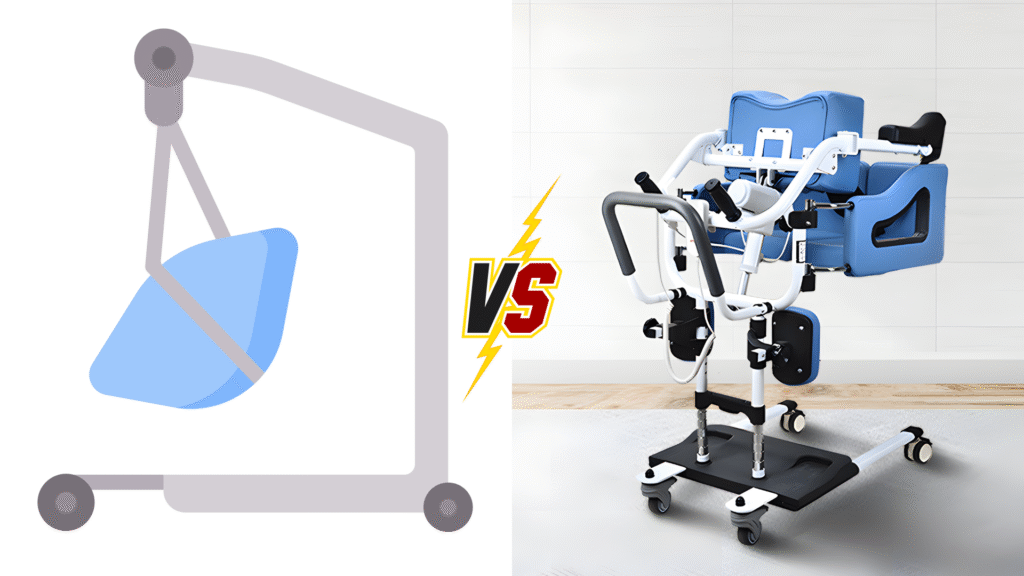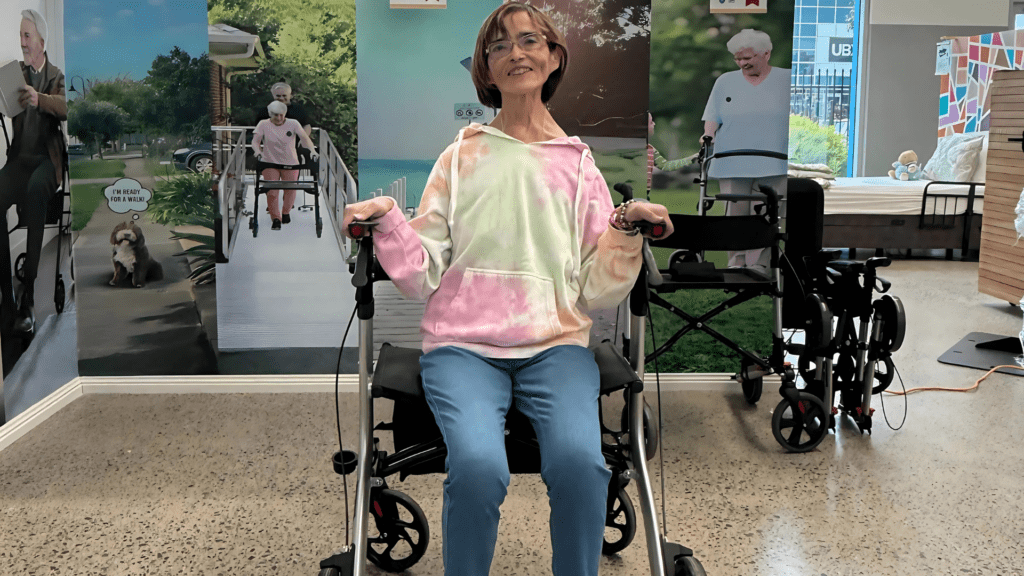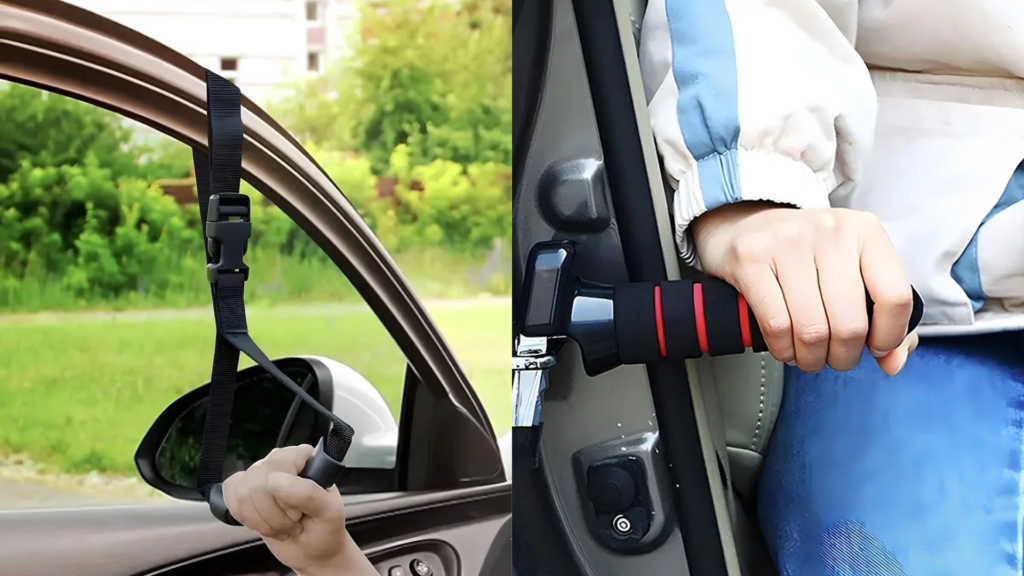Caring for someone with limited mobility at home requires safe, efficient transfer solutions. Patient lifters—also known as hoists—play a critical role in helping caregivers move individuals from beds to chairs, toilets, or wheelchairs with minimal strain and maximum safety.
Two common types used in home settings are portable patient lifters and ceiling hoist systems. This guide compares both options to help you choose the best fit for your home care environment, considering space, budget, and user needs.
Understanding the Role of Patient Lifters at Home
Patient lifters are mechanical or powered devices used to safely lift and transfer people with mobility challenges. For home-based care, the right lifter can:
- Prevent injury to both caregiver and user
- Increase independence and comfort
- Improve safety during daily transfers
- Enable at-home care without major facility upgrades
Explore our full range of patient lifters designed for home use.
Portable Lifters Benefits Limitations Ideal Users
Portable patient lifters are mobile, wheeled devices typically powered or hydraulic, allowing transfers between rooms without fixed installation.
Key Benefits
- Flexible use across multiple rooms
- No structural changes required ideal for rentals or shared living
- Easy to store away or transport
- Lower upfront cost compared to ceiling systems
- Compatible with a wide range of slings
Limitations
- Takes up floor space which may be limited in smaller homes
- Requires sufficient clearance under beds and furniture
- Transfers may still involve moderate manual guidance from the caregiver
Ideal For
- Homes with enough open space for manoeuvring
- Short-term rehabilitation or transitional care
- Families needing an affordable portable lifting solution
Recommended model Powered Patient Lifter with Armrest Seat – compact design, powered lifting, and armrest support for easier handling.
Ceiling Lifters Installation Use Cases Funding
Ceiling hoists are track-mounted lifting systems attached to the ceiling or walls, designed for fixed-location transfers such as bed to toilet or shower.
Key Benefits
- Saves floor space ideal for small or cluttered rooms
- Enables one-person transfers with reduced manual effort
- Quick smooth transitions with minimal repositioning
- Suitable for complex care or frequent daily lifting
- Some systems allow track-to-track transfers across rooms
Limitations
- Requires permanent or semi-permanent installation
- Higher initial cost
- May need professional setup and occasional servicing
- Not ideal for temporary care or shared accommodation
Ideal For
- Homes with limited mobility space
- Long-term or palliative care situations
- Users needing frequent transfers with minimal carer involvement
Cost Setup and Maintenance Comparison
| Feature | Portable Patient Lifter | Ceiling Patient Lifter |
| Installation | No structural changes | Ceiling track or wall mount required |
| Price Range | Moderate lower upfront cost | Higher installation and setup included |
| Storage | Can be folded or wheeled into storage space | Permanently fixed minimal visible clutter |
| Portability | High move between rooms or homes | Fixed room-specific or track-limited |
| Setup Time | Immediate use after delivery | Requires professional installation |
| Maintenance | Occasional checks battery or power | Periodic inspections and servicing |
| Funding Eligibility NDIS SWEP | Yes often faster for approval | Yes but may require more documentation |
OT Advice on Choosing Between the Two
An occupational therapist plays a key role in selecting the right lifter, as they:
- Assess mobility home layout and carer capacity
- Recommend models that fit NDIS or SWEP eligibility
- Support your application with detailed functional justification
- Suggest whether a ceiling system or portable unit meets long-term needs
Start with a quote and OT consultation via our product enquiry form or speak to our team at Care With Us for guidance.
Conclusion
Choosing between a portable and ceiling-mounted patient lifter depends on your home size care frequency funding options and carer needs.
- Portable lifters offer flexibility and ease of use without major modifications
- Ceiling lifters provide space-saving low-effort transfers ideal for long-term care
- Both options are eligible for NDIS and SWEP support with proper OT assessment
- Explore our lifters for home care
- Get a quote or trial for home use
- Contact us for NDIS-compliant support
Frequently Asked Questions FAQs
- What is the main difference between a portable lifter and a ceiling hoist?
Portable lifters are mobile and do not require installation. Ceiling hoists are fixed to the ceiling and offer more space efficiency but require setup. - Can both types be funded by NDIS or SWEP?
Yes. Both lifter types may be funded depending on the user’s needs and OT recommendations. - Are ceiling hoists difficult to install in rental homes?
It may be challenging. Portable lifters are often preferred for rental properties. Ceiling systems require landlord permission and professional installation. - Which lifter is better for small rooms?
Ceiling lifters are ideal for tight spaces as they don’t occupy floor area. Portable lifters need more clearance. - Do I need an OT assessment to get a lifter funded?
Yes. NDIS and SWEP both require a formal OT report to justify the equipment based on the individual’s functional needs.



